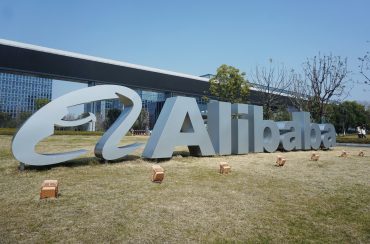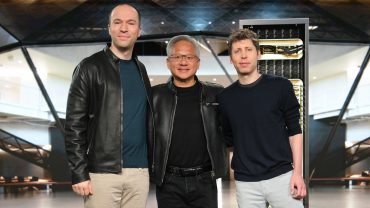

U.S. chip export restrictions force Chinese AI leader DeepSeek to explore domestic alternatives for launching cost-effective language models
Key Takeaways
- DeepSeek’s R2 model faces delays due to U.S. ban on Nvidia H20 chips, forcing the Chinese AI company to explore alternatives like Huawei’s Ascend 910B chips
- 97.3% cost reduction achieved through DeepSeek’s hybrid Mixture-of-Experts architecture compared to OpenAI’s GPT-4, disrupting industry pricing with $0.55 per million tokens versus OpenAI’s $15
- Nvidia stock drops 17% following DeepSeek R1’s release as investors fear long-term demand erosion for premium GPUs amid shift toward cost-effective AI models
Introduction
Chinese AI company DeepSeek faces significant obstacles in deploying its upcoming R2 large language model as chip shortages intensify following recent U.S. export restrictions. The company’s reliance on Nvidia’s H20 server chips has created a bottleneck that threatens the planned acceleration of R2’s release from its original May timeline.
This development highlights the growing impact of geopolitical tensions on AI innovation, as DeepSeek’s cost-effective approach has already disrupted industry pricing and forced competitors to reassess their strategies. The chip shortage affects most cloud customers currently using DeepSeek’s R1 model, creating immediate operational challenges for the company’s expansion plans.
Key Developments
DeepSeek’s engineering teams have spent months refining the R2 model, but CEO Liang Wenfeng remains unsatisfied with its performance. No official release date has been set despite the company’s intention to accelerate the launch timeline significantly.
The U.S. ban on Nvidia’s H20 chips, which were specifically designed for the Chinese market, has forced DeepSeek to pivot its hardware strategy. According to Investing.com, the company now explores Huawei’s Ascend 910B chips as alternatives, which offer 91% of Nvidia’s top GPU efficiency at reduced costs.
The R2 model targets improved coding and multilingual reasoning capabilities through its hybrid Mixture-of-Experts architecture. This approach activates only relevant model areas while using multihead latent attention to process multiple information aspects simultaneously, achieving substantial cost reductions.
Market Impact
DeepSeek’s aggressive pricing strategy has triggered significant market reactions across the AI sector. The company’s R1 model pricing at $0.55 per million input tokens compared to OpenAI’s $15 has forced industry leaders to reconsider their cost structures.
Nvidia’s stock experienced a 17% decline following DeepSeek R1’s release as investors expressed concerns about potential long-term demand erosion for premium GPUs. The market reaction reflects broader uncertainty about hardware-centric strategies in an increasingly efficiency-focused landscape.
Major technology companies including OpenAI and Google have adjusted their strategies in response to DeepSeek’s cost-effective approach. The shift toward efficiency over raw computing power challenges traditional assumptions about AI development costs and market positioning.
Strategic Insights
DeepSeek’s success demonstrates a fundamental shift in AI development philosophy from maximizing compute power to optimizing efficiency and cost-effectiveness. The company’s 97.3% cost reduction compared to GPT-4 training expenses represents a paradigm change that could democratize AI access globally.
Chinese authorities have embraced DeepSeek as evidence of the country’s innovation capabilities, with adoption spanning 13 city governments and 10 state-owned energy companies. Technology giants Lenovo, Baidu, and Tencent have integrated DeepSeek models into their product offerings, signaling broad market acceptance.
The chip shortage creates both immediate challenges and long-term opportunities for supply chain diversification. Companies worldwide face pressure to accelerate their AI development efforts to compete with cost-effective alternatives, potentially breaking the dominance of established players.
Expert Opinions and Data
Industry analysts view DeepSeek’s approach as a catalyst for increased competition and expanded AI accessibility. “The launch of DeepSeek’s R2 model could be a pivotal moment in the AI industry,” said Vijayasimha Alilughatta, chief operating officer of Indian tech services provider Zensar.
Alilughatta emphasizes that DeepSeek’s cost-effective model development “would likely spur companies worldwide to accelerate their own efforts … breaking the stranglehold of the few dominant players in the field.” This perspective reflects growing industry recognition of efficiency-driven innovation.
DeepSeek founder Liang Wenfeng has remained notably silent since July 2024, following Beijing’s instructions to avoid media engagement without approval. “Our problem has never been funding,” Liang previously told Waves magazine. “It’s the embargo on high-end chips.”
The company’s foundation stems from High-Flyer hedge fund’s decade-long AI investment strategy, with 70% of revenue reinvested into research and 1.2 billion yuan spent on supercomputing AI clusters.
Conclusion
DeepSeek’s R2 delays underscore the complex intersection of geopolitical tensions, supply chain constraints, and technological innovation in the global AI landscape. The company’s cost-effective approach continues reshaping industry expectations while chip shortages create immediate operational challenges.
The broader implications extend beyond individual company performance to fundamental questions about AI development strategies and market access. DeepSeek’s success signals a shift toward efficiency-driven innovation that challenges traditional hardware-centric approaches and potentially redefines competitive dynamics across the technology sector.








